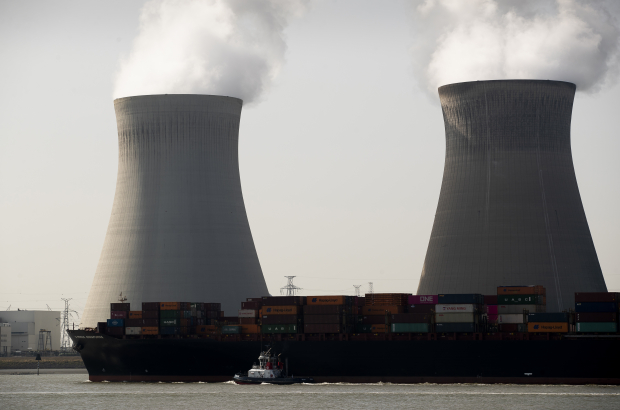- Daily & Weekly newsletters
- Buy & download The Bulletin
- Comment on our articles
Government and Engie Electrabel at odds over nuclear shutdown
Belgium has seven nuclear reactors: four in Doel and three in Tihange. Alexander De Croo's government has confirmed its intention to close them all by 2025 - a decision that will redefine the country's energy landscape.
This week, Engie Electrabel announced that it no longer plans to invest in the maintenance of nuclear power plants, in accordance with the nuclear exit law passed in 2003. On Tuesday, the French-Belgian energy giant communicated its plans to all its staff.
The company’s announcement had been predicted for some time. Engie Electrabel had been sending warnings to the Belgian government and its energy minister, Tinne Van der Straeten, for several weeks. If the company did not obtain a clear position from the government relating to an extension of operations at the two newest Belgian power plants, Doel 4 and Tihange 3, before the end of 2020 it would not be able to ensure the continuation of its compliance work, nor could it order in time the necessary safety equipment and fuel (the fissile material) to operate them.
However, the energy minister stood by her position: there would be no extension for nuclear power beyond 2025. However, a window of one year – until the end of 2021 – was left open for the government to reverse this decision should Belgium’s energy supply suffer. Belgium will lose 6,000 megawatts of electricity with the complete dismantling of nuclear power plants. Between 3,000 and 4,000 MW of electricity will have to be supplied by the proposed replacement gas plants to ensure security of supply.
“This very firm position of the government forces us to prepare for a change of course,” Thierry Saegeman, the Belgian head of nuclear power at Engie Electrabel, told his staff. “We must now all focus all our resources, personnel and equipment, in preparation for the final shutdown and dismantling of our seven units. This means, for us, that we are accelerating a full nuclear exit by 2025.”
The French-Belgian energy provider is in a sticky situation. According to several energy experts, the company has teams of engineers, numbering in the hundreds, working on Doel 4 and Tihange 3. Now, Engie Electrabel believes that the investment of working hours and overtime pay is too large, so it is pulling the plug.
“Engie Electrabel's situation is very complicated,” says Patrick Hendrick, professor of aero-Thermo-Mechanics at the ULB (Free University of Brussels). “They have always called for a clear decision by December 2020. They must make investments. If they are told that in 2021, they made these investments for nothing, they're stuck.”
Extending the power plants is therefore too big a gamble for Engie Electrabel. The company wants to prepare for its future, notably by constructing gas-fired power plants to replace nuclear power plants. For nuclear power plants, Engie Electrabel has always talked about an extension of 10 or 20 years, not five years, in order to make a smooth transition to alternative forms of energy.
Despite the nuclear exit law being signed in 2003, there is still no detailed plan for the end of nuclear power in Belgium. And the construction schedules for the steam gas (TGV) power plants to replace the reactors are really tight in relation to the proposed cut off point for nuclear.
The question remains: will Belgium’s gas-fired power plants be built on time and ready to go before 2025? The clock is ticking, and Belgium is still waiting for the green light from Europe to be able to build the new gas-fired power plants needed to replace the nuclear-powered ones. “There is a risk that they will not be built in time,” says Damien Ernst, an energy expert at the University of Liège. “The logic behind this is akin to jumping out of plane without a parachute and sewing the parachute during the descent.”
For the workers, it is also a very uncertain time. The two sites in Doel and Tihange provide employment for 7,000 staff. The end of nuclear power in Doel and Tihange means most if not all will be seeking new jobs. Some workers will be able to convert to working at the new gas-fired power plants, but for every 600 to 1,000 workers operating a nuclear reactor, only 60 workers are needed at a gas-fired power plant.
Another option is to move into the petrochemical sector, a decision that has been taken by increasing numbers of former nuclear workers in recent times. This is especially true for those in Doel where the plant is close to the port of Antwerp with all its oil and gas terminals. In Tihange, that is not an option. Elsewhere in the energy sector, jobs are scarce: there are very few in gas-fired power plants, and even less in wind power. Some skilled staff will therefore start looking towards France and other countries for their employment opportunities.
Workers in the sector have long expected this endgame, but now they feel abandoned. “Most of all,” says Damien Defourny, a member of staff at the Tihange nuclear plant, “we feel drowned in lies. A lot of things are said about nuclear power that are not true. To see our nuclear power plants replaced by gas-fired power plants or by energy imported from Germany that uses a lot of coal-fired power plants, that frustrates us terribly. We do not feel that we are moving towards a better future for the country, to be honest.”















